Page 3 of 9
Re: Max Anderson
Posted: Mon May 03, 2021 1:00 pm
by trevor
Some great shots there Max, and well done with the early life stages.
I take my hat off to you and Ben, both young men with excellent eye sight, and keen.
You are both the future of this hobby, and hopefully the future for the well being of butterflies.
Hat taken off!. Stay well,
Trevor.
Re: Max Anderson
Posted: Mon May 03, 2021 3:32 pm
by Max Anderson
Thanks all. I appreciate the kind comments, and I'm glad you enjoyed the wide-angle, large depth-of-field shots. I'm thoroughly enjoying the challenges associated with composing these shots.
Benjamin wrote: ↑Mon May 03, 2021 10:13 am
...Following immature stages in the field often feels like a thankless task - the necessary investment of time is huge and the rewards are often hard to appreciate. You have to get used to missing all the key moments, and failing to achieve your goals for reasons out of your control...
I threw myself in the deep end with regards to following immature stages - I set out to monitor brown, black, white-letter and purple hairstreak eggs and larvae, and I fully expected to learn more about what I'm capable of, as oposed to about the habits of these four species. This has certainly been the case so far, and I'll be taking any knowledge I gain forward. Learning is always a rewarding process for me, even when the steps are small and sometimes appear to be disappointing. Thanks for your encouragement!
Re: Max Anderson
Posted: Mon May 03, 2021 3:50 pm
by Max Anderson
I spent 15 minutes checking on the progress of some brown hairstreak eggs at a local site, before my weekly food shop this morning. There is a very limited, but highly suitable patch of blackthorn, which yeilded a high density of eggs during a count back in December. Fortunately, I had marked all located eggs and finding any emerged caterpillars was not too difficult, particularly at this early stage where the leaf growth on the blackthorn suckers is not substantial. I managed to find five caterpillars in 15 minutes, and was by no means systematic. I'll return when I have more time to spare!
Re: Max Anderson
Posted: Mon May 03, 2021 7:47 pm
by Katrina
Very clear photos of the little caterpillars. Thank you for posting.
Re: Max Anderson
Posted: Mon May 03, 2021 8:13 pm
by bugboy
You had better luck at finding them than I did at the weekend, although your blackthorn looks somewhat more advanced than the stuff I was looking at.
Re: Max Anderson
Posted: Tue May 04, 2021 11:00 pm
by David M
Great find, Max. It's not easy to do justice to such tiny larvae but you have managed it nonetheless. I hope you are able to track them further as they develop.
Re: Max Anderson
Posted: Fri May 14, 2021 3:53 pm
by Max Anderson
Blues and Dukes
Last week I spent a morning or three at Kithurst meadow, West Sussex, in the hope that the Duke of Burgundy would make an appearance. It was clear from the state of the vegetation, that things were suffering from lack of warm weather and rainfall, with cowslips noticeably shorter and far more exposed than they were at this time in previous years. I tried to avoid the well-trodden paths by searching along the steep verges close to the road and was well rewarded with around 20 brown argus and a lonely common blue.
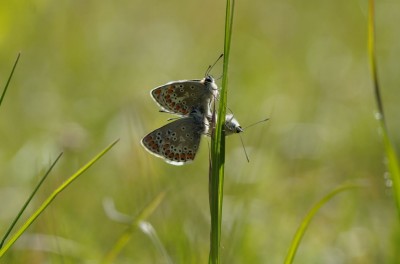
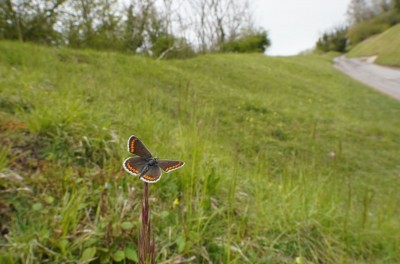
On May 7th at around 10:30, I spotted my first Duke of Burgundy, which quickly settled on a path, where the vegetation was short. Over the next 45 minutes or so, I managed to count a further 6 individuals for a total of 7 across the site, all adopting positions along paths where the vegetation was shorter and they could bask within an inch of the ground. I also caught a glimpse of a single small blue, but it didn’t stick around for long, not to be seen for the remainder of the morning.
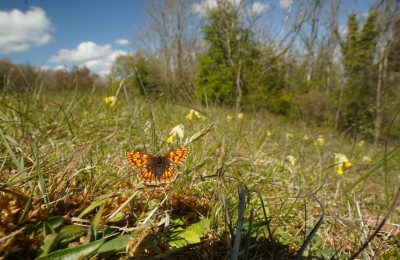
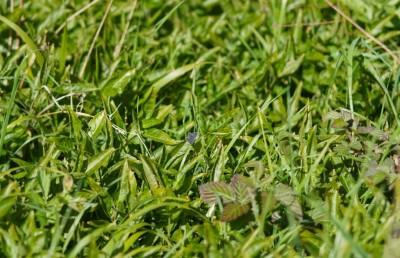
In the afternoon of May 10th, I returned and caught a brief glimpse of another small blue, but was unable to follow it for more than 10 seconds before it disappeared. The Dukes were more active and I counted a total of 18 individuals, with males battling aerially in the typical synchronous pirouetting style, and two females were observed nectaring from around 2.30pm. The significant influx of painted ladies was also evident, with 5 individuals sighted. By now, the lonely common blue had found a worthy adversary, which kept them both duly occupied.
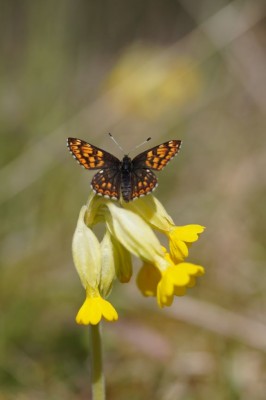
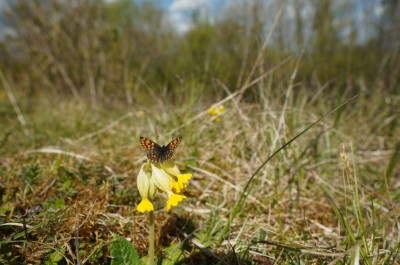
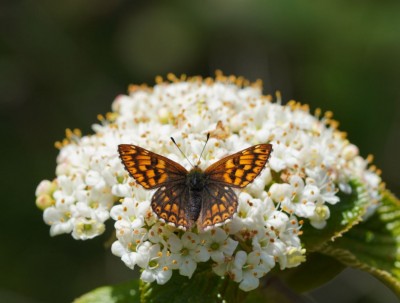
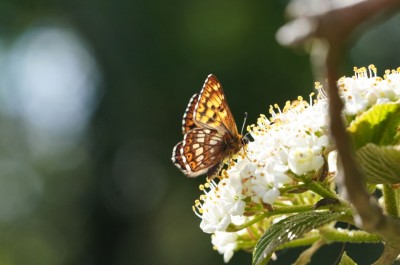
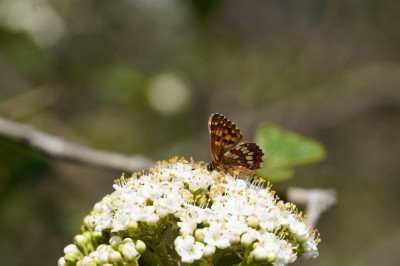
The following afternoon, I returned again and counted 23 Dukes in total, including at least five females, three of which were seen nectaring within 50cm of eachother. I was also fortunate in finding a batch of eggs. Along the paths of the main field, in the usual hotspots, there were often 4 or 5 males resting along a stretch of 2 or 3 metres. Again, I spotted a single small blue, but I was fortunate to keep up with it and managed to spend some time watching as it took nectar from forget-me-nots. I also noticed that this individual spent a considerable amount of time performing hindwing ‘antipredator’ movements, much like some other Lycaenids, i.e. hairstreaks, which will move their hindwings so that their tails will mimic typical movements of antennae. I’m unsure whether there are other functions behind this behaviour that may provide benefits in the absence of a tail, or whether this behaviour is a relic, which is yet to be lost during the evolutionary process. Considering that many other Cupido species have tails, the latter seems plausible, but I would appreciate any comments or insight on this.
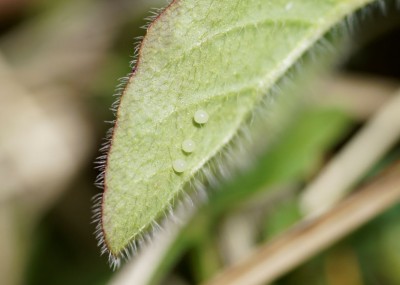
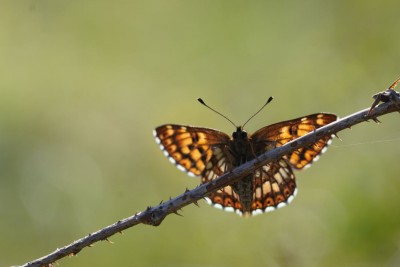
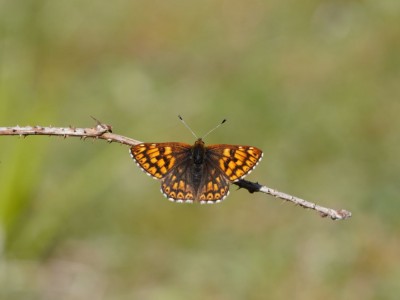
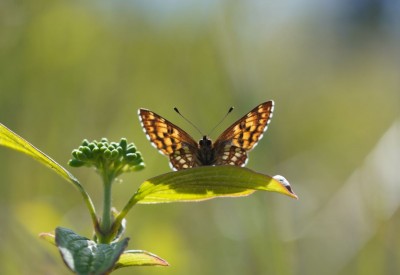
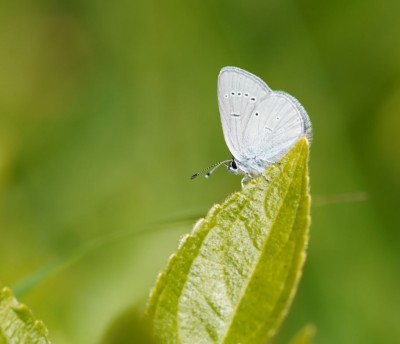
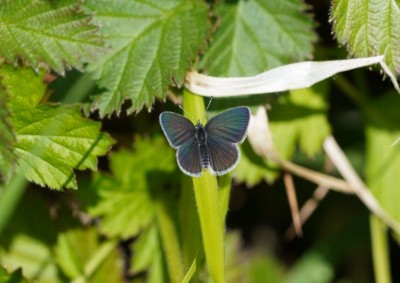
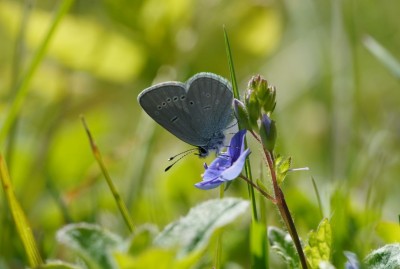
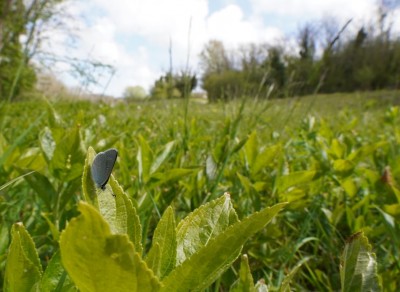
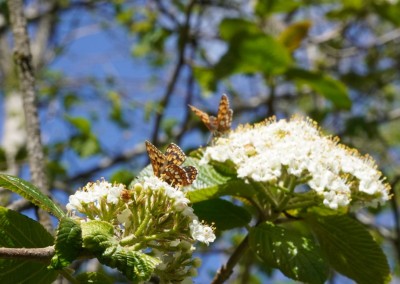
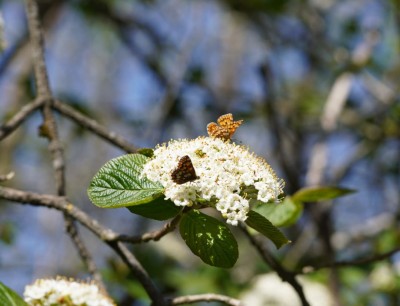
Re: Max Anderson
Posted: Fri May 14, 2021 7:03 pm
by trevor
Interesting report Max, and images to match.
Good to see the Small Blue at Kithurst, haven't seen one there for several years.
Stay well,
Trevor.
Re: Max Anderson
Posted: Fri May 14, 2021 7:48 pm
by Chris L
Absolutely fantastic collection of photos Max. There are some real gems there. Congratulations.
Re: Max Anderson
Posted: Sat May 15, 2021 6:17 pm
by Wurzel
A cracking collection Max - I especially like the 'stained glass' shots and the 'twofers' of the Dukes.


The three Brown Argus together (I'm guessing the third was a BA) is also pretty special


Ernie has made a collection of 'wing rolling shots' and has set up a thread on the website detailing this behaviour but I can't recall if there was a decisive reason given for it though I can definitely see it working as an anti-predator mechanism

Have a goodun and stay safe
Wurzel
Re: Max Anderson
Posted: Sun May 16, 2021 7:40 pm
by David M
Sounds like a cathartic day, Max, and 23 of any species, least of all Duke of Burgundy, is not to be understated given the general paucity of butterflies right now.
Good to see you managed to nail down Small Blue after a tentative start.

Re: Max Anderson
Posted: Tue May 25, 2021 3:42 pm
by Max Anderson
Thanks again for the kind comments.
On the 'wing rolling' of small blues, I did some more digging and saw that there are multiple purposes behind this, one of which is the specific anti-predator behaviour to create the illusion of a 'false head' when the tails move (in species with tails). An additional purpose behind wing rolling or rubbing in male butterflies is in the production and diffusion of pheromones to attract females. The rubbing of androconia (scent scales) can help in the dispersal of these pheromones. I'm unsure as to whether the 'false head' behaviour and pheromone production can be achieved independantly.
Re: Max Anderson
Posted: Tue May 25, 2021 4:08 pm
by Max Anderson
Hairstreaks at night
The poor weather has been a great source of frustration over the past few weeks. I had intended on catching up with green hairstreak last week, but during any free time I had, rain was falling. I also spent a few days at Knepp surveying dung beetles and establishing some baseline monitoring for their new regenerative farming project. Fortunately, there was a brief period of warm, sunny weather, during which activity soared, but otherwise conditions were poor.
I noticed Guy Padfield had posted some great pictures of White-letter hairstreak larvae, which he had located during some UV torchlight surveys at night. Inspired by his findings, I immediately set out to re-locate any of the ‘missing’ WLH larvae that I had observed hatching earlier in the year.
UV torchlight surveying has been nothing short of enchanting. The larvae of many lepidopterans and other species, illuminate in a bright white-green hue, which contrasts greatly with the majority of vegetation. It truly is a hidden world, much like stargazing, with larvae lighting up like stars in the night sky on a clear day. Settled raindrops often catch the light, which can be misleading. Nonetheless, after some time, it does become quite easy to spot once you get your eyes tuned in. No longer would poor springtime weather hamper my obsessions.
I returned to my local park a week or so ago, where I had previously found four WLH eggs in two separate elms, all of which I had labelled as ‘missing’, after failing to keep track of their locations. Within five minutes, I had found a total of seven WLH larvae, all were well developed and going about their feeding activity.
Encouraged by the success I had in locating WLH larvae, a few days later I set out to a known brown hairstreak (BRH) site, adjacent to a local supermarket, and was rewarded very quickly with six larvae in about 30 minutes. At this time, BRH are far smaller in size compared to WLH, and their tendency to lay eggs on young growth means that the larvae are often lower to the ground, and on the underside of leaves, which makes spotting them considerably more difficult.
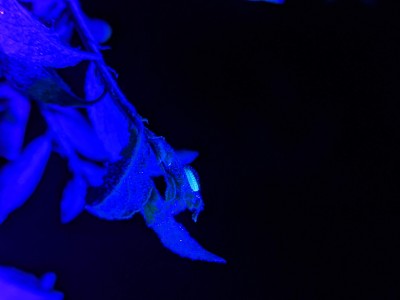
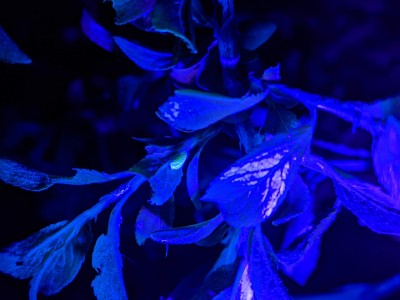
Last night, after playing touch rugby up in Horsham, I came back through Ditchling and decided to see how I would get on with black hairstreak (BLH) in the pouring rain. During the winter, I spent a considerable amount of time searching for eggs, which had been a thankless task, yielding only four eggs after a total of 22 hours. After being distracted by some BRH larvae, I managed to find a BLH larva, and then an additional three over the course of 10 minutes. I will be back to undertake something more systematic, and then my next steps will be to back track on these larvae to identify where the eggs were laid, to gather more information about the egg-laying habits of this species at Ditchling.
Re: Max Anderson
Posted: Tue May 25, 2021 5:47 pm
by Benjamin
Superb Max - I nearly bought one after reading Guy’s diary, but for some reason didn’t. Having now seen your results my order is placed - I want to go WLH counting at night. Great stuff.
Re: Max Anderson
Posted: Tue May 25, 2021 6:18 pm
by millerd
That really is quite extraordinary. What a terrific tool for more accurately estimating larval numbers in these species.

I imagine the long-wave UV from these torches isn't harmful in small doses.
Just as long as no night-feeding predators evolve the ability to emit UV light and light up their prey - Mother Nature can be very cunning sometimes!
Cheers,
Dave
Re: Max Anderson
Posted: Tue May 25, 2021 6:56 pm
by Wurzel
Really interesting images Max


Looks like I have another addition to purchase for my butterfly kit

Are they appearing like that in the uv light for the same reasons that Scorpions also glow in black light?
Have a goodun and stay safe
Wurzel
Re: Max Anderson
Posted: Tue May 25, 2021 8:34 pm
by Neil Hulme
I just LOVE this stuff!

BWs, Neil
Re: Max Anderson
Posted: Tue May 25, 2021 9:07 pm
by Max Anderson
Thanks all.
I've been thinkink about how effective this could be for making some local population estimates, particularly for species like white-letter hairstreaks, which are particularly mobile and elusive as adults.
Ben - I'd be keen to see how effective this would be for purple emperor cats. May take a little bit of the sting out of searching during the colder months..
Wurzel - Yes, that's right, same idea as for scorpions - Black light is a type of UV, so they'll do the same job!
Re: Max Anderson
Posted: Tue May 25, 2021 9:21 pm
by Janet Turnbull
Hello Max - I've just jumped in to this amazing conversation - can I ask a silly question? Does UV light hunting have to be done in the dark or does it work in twilight?
Best wishes, Janet
Re: Max Anderson
Posted: Tue May 25, 2021 9:38 pm
by Benjamin
Max Anderson wrote: ↑Tue May 25, 2021 9:07 pm
Ben - I'd be keen to see how effective this would be for purple emperor cats. May take a little bit of the sting out of searching during the colder months..
Unfortunately I’m told that PE larvae do not fluoresce under UV, but I will certainly double check. I’m mainly looking forward to WLH surveys around my elm lined local streets, and as I have accidentally collected several recently, I can only imagine they are everywhere.